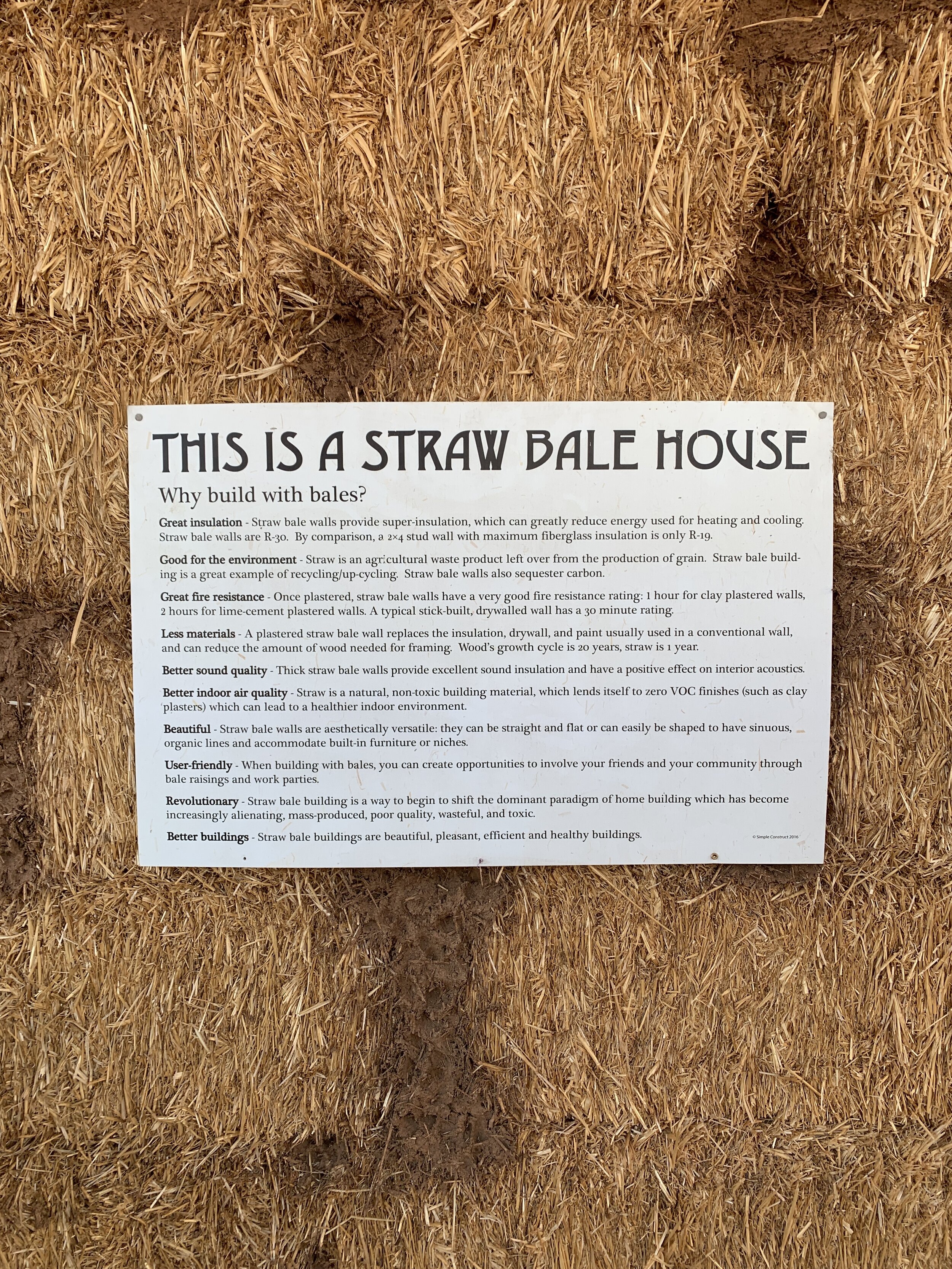Learned Something New: Sustainable Straw Bale Home Construction
/Over the weekend I attended an event to learn about straw bale home construction - a sustainable building material that benefits the planet instead of hurting it. The organizers also talked about regenerative agriculture, permaculture, and ethically sourced mezcal. It was really cool, and I want to share just a little bit of what I learned about a unique construction material with you.
The event was held in Valley Center, an inland city in North County San Diego. It was nearly a billion degrees out there on a summery afternoon but it had beautiful sweeping views far away from the city.
I went because there are two homes under construction using an un-conventional building material. Straw. We’ve heard the Three Little Pigs story and we’ve heard of different types of materials used in architecture around the world and through the centuries, but this is a modern take on construction using a unique material.
That image there says most all of what I found so fascinating about this type of construction. But if you prefer reading the text that my human hands type out using my human brain’s interpretation, here’s my summary.
Straw is a byproduct of creating grains. Basically, it’s trash when folks make grains like wheat so putting it to use gets it out of the waste stream. Win 1.
Plants store carbon, but when we cut down plants, burn forests, or decompose vegetation, that carbon is released into the air which contributes to the CO2 we have in the atmosphere - a major issue in our climate crisis. If the straw isn’t burned or decomposed, and say stored forever in the walls of a house, it stores that carbon and thus keeps it out of our air. This is called carbon sequestration. Win 2.
Straw is a great insulator - when using the full bale of straw, it’s 30% more insulating than the fiberglass stuff we get at a big box store. Win 3.
Straw bale walls with plaster coatings burn 2-3x slower than conventional wood-framing and drywall. Win 4.
Straw grows waaaay faster than wood, so using more straw and less traditional lumber uses less materials and less energy to produce them. Win 5.
Straw bale construction creates walls that breathe and will hold moisture when there’s too much, and release it when it’s too dry. Win 6.
The walls of a straw bale home are more sound-proof, use less toxic chemicals, create a beautiful look, and are downright cool. Win 7, 8, 9, and 10.
So cool, right?!
Imagine how pretty those windows will be set deep in the walls! The wide bales make for great window seats, too.
This project is still very much under construction. The finished result will have plaster all over the straw to look more like a traditional wall. Check out photos of completed projects done by the design-build firm working on these houses here.
If you’re in San Diego and want to participate in the plastering of these very walls, sign up here! If you don’t want to get quite that involved but want to see the property, you can check out this very house and the many others on the San Diego Green Homes Tour. If you aren’t local but want to learn more about this building process, here’s a book by the folks that are building these houses.
The owners of this property are doing much more than building these homes. They purchased 17 acres of poorly-managed land and are going to farm on the land to sequester carbon and practice regenerative agriculture and permaculture. Click those links to get a brief introduction to those terms that are key players in combating our climate crisis - then do some digging on your own about them since those links just scratch the surface.
You can bet that if this building model worked for my kitchen remodel, I’d surely consider it. However, due to the size of my home and the limitations of my historic designation, this wouldn’t quite work for my house.
I am of the belief that old houses are among the greenest houses. Primarily because the old house materials are already in place and many of the materials will outlive us - unlike the ones in new construction. But, when it comes to building new houses to restore the land, I’m all for it! I’d like to hope that construction will evolve to be more carbon neutral instead of so destructively carbon negative like it is now. Fingers crossed.
If you want to learn more, here is some reading material and additional information for ya:
Simple Construct is the design/build firm behind these houses
San Diego Sustainable Living Institute is behind the construction of the homes and management of the farm
More on straw bale construction from the owner of Simple Construct
Straw Bale Building Details: An Illustrated Guide for Design and Construction co-authored by Simple Construct
The New Carbon Architecture: Building to Cool the Climate I just picked up this book the other day and look forward to digging in.
Essential Sustainable Home Design: A Complete Guide to Goals, Options, and the Design Process
P.S. The people that organized the event didn’t ask me to write this. In fact, they have no idea that I wrote it - well, maybe they do now that you’ve clicked over to their sites and supported them. I paid to attend the event as a way of continuing to learn about sustainable building practices, and getting to know others in my community that are passionate about the same things that I am.
































